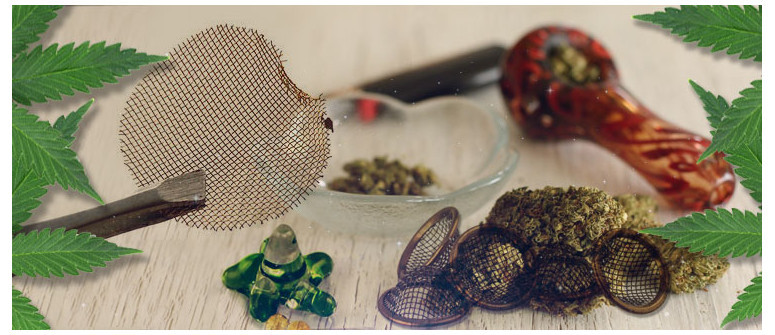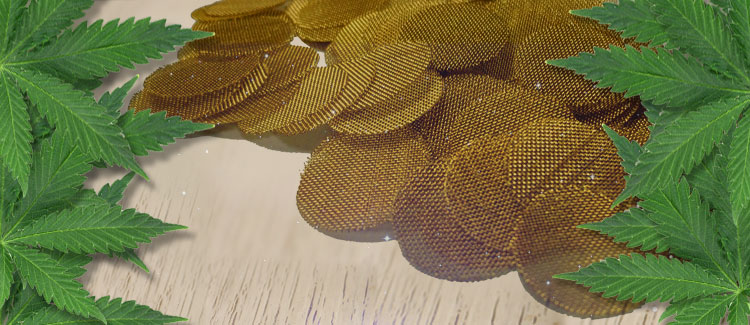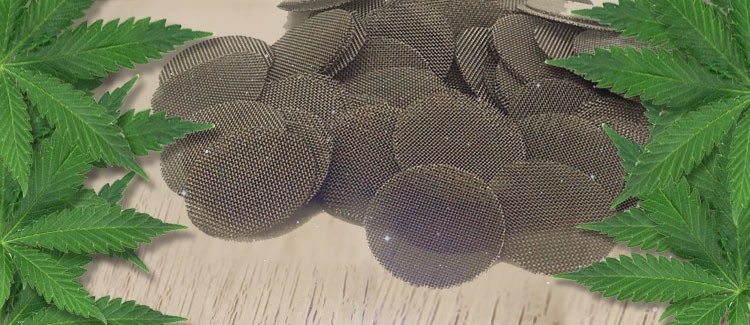The different kinds of pipe screens explained

Pipe and bong screens are made from a number of materials. We have a quick look at what kind of pipe screens are available for the average pot enthusiast, and how they cause the experience to differ.
Pipe and bong screens are all about keeping chunks of weed in the bowl or cone and not in the water or your mouth. When using a chillum or other styles of dry pipes, there’s nothing worse than the hellish round of coughing that follows a chunk of weed or ash being drawn into your throat.
Drawing on a bong can exert quite a lot of pressure on the bowl. Without a screen, pieces of weed can be sucked into the water. Unless you have a mad friend who chugs bong water, this is just a waste of weed. Screens keep the marijuana in the bowl where it can be wholly burnt.
Thin metal mesh screens can be easily shaped to fit the bowl of any smoking device. Glass screens are made to fit more precisely and can’t be molded. Screens also keep the bowl and stem cleaner for longer. When a screen gets clogged, it is a simple thing to replace it. The longer between the gross bong cleaning necessities, the better.
Screens are made from a number of materials. Each works as well as the other, with durability being the main difference.
BRASS SCREENS

Brass screens are the originals of the screen world. Used in tobacco pipes, they have been around for decades and served that purpose well. They prevent dottle from clogging the draught hole, shank and stem. Brass screens are easily adapted for the pipes and bongs used for smoking weed. They are easily and cheaply obtained from tobacco shops and have been doing a great job to this day.
The only downside to brass screens is they degrade over time. Using a bong generates substantial heat, and the constituents of brass (copper and zinc) have relatively low melting points—not that you will ever generate that kind of temperature. However, the continuous exposure to continuous heat fluctuations eventually breaks the screen down until it needs to be replaced.
STAINLESS STEEL SCREENS

Stainless steel screens operate in the same way as brass screens; the main difference is that they are more durable. Made from the same stainless steel as household pots and pans, they have a high melting point and take longer to wear out due to thermal shock—going from hot to cold and back again.
GLASS AND QUARTZ SCREENS

Glass and quartz screens are made to a specific size to fit the bowl they were intended for precisely. They are the most durable types of screens. They don’t wear out, as glass can withstand some heavy duty heating.
Borosilicate glass has a low thermal expansion coefficient making it resistant to thermal shock. This makes them ideal for bongs and pipes with the continuous cycle of heat ups and cooldowns. It is one of many glasses that have additives that alter the melting temperature.
Quartz screens are much the same; only they are pure silica with no additives like boron trioxide. Called fused quartz or fused silica, it can withstand very high temperatures.
Built-in screens are very common in glass smoking gear. The pipe or bong bowl has a type of screen incorporated into its structure. They can be a series of holes in a grid formation, an actual criss cross grid or a flower pattern. It really depends on manufacturers preference. These aren’t disposable of course, so you will need to maintain them regularly for a clean draw and pure flavor.
TO SCREEN OR NOT TO SCREEN?
Some people choose not to use screens. Some people swear by them. The art of smoking a pipe or bong remains the same whether you choose to or not. A pleasurable experience is more about technique than anything else. In the end, it’s all about getting a clean hit of that funky weed.
.jpg)
.jpg)

.jpg)
